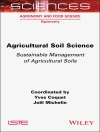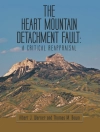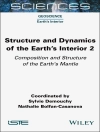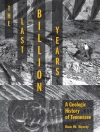This book covers the latest advances in the popular research areas in Earthquake Engineering: Seismic Protection, Non-Destructive Testing and Structural Health Monitoring, as well as Seismic Performance Assessment. Part I includes seven chapters on seismic protection systems, a new passive isolation system for tower structures, frictional base isolation systems, period changeable isolation systems and presented applications, and recent developments in Italy, Japan and Macedonia. Also, particularities of design basis ground motion for long period structures are explained. Soil-Structure interaction models on the relevant subject are presented by classifying them. Part II presents three chapters on the new developments on Non-Destructive Testing (NDT) and Structural Health Monitoring (SHM) for Performance Assessment of Structures. Applications and recent developments in USA, Canada, and Turkey are presented. Part III includes eight chapters on Seismic Performance Assessment. The subject of this part is presented on its following important components, and results are discussed: New criterion on performance based seismic design with application to a high-rise building; seismic design and performance assessment of a super tall concrete core wall building; seismic design and evaluation of high-performance modular tall timber building; challenges to detailed finite element analysis of entire building structures; seismic performance evaluation of traditional Japanese wooden houses with outer-frame reinforcement; dynamic response of pipeline, subjected to subsurface and surface blast explosion; bond behavior of sand-coated CFRP rebar embedded in concrete are given; seismic resistant large-span shell structures are presented.
The book presents a concise summary of latest research findings, and will be of interest to a wide range of professionals in earthquake engineering, including graduate students, instructors, designers, and researches.
Table of Content
Part I Seismic Isolation Systems (SIS).- Part II New Developments on Non Destructive Testing and Structural Health Monitoring For Performance Assessment of Structures.- Part III Seismic Performance Assessment.
About the author
Azer Arastunoglu Kasimzade is a Professor in the Department of Mechanics and Director of the Earthquake Engineering Scientific Research Center at Azerbaijan University of Architecture and Construction-Az UAC , Baku, Azerbaijan . He is also a Professor Emeritus in the Department of Civil Engineering at Ondokuz Mayis University-OMU, Turkey. He currently serves as consultant, peer reviewer and as coordinating member of seismic code committee to the internationally partnerships projects subjected to Structural Seismic Isolation System and Modelling, Monitoring, Model Calibration, Assessment for Highly Reliable Structures. He has received his Ph D and DSc degrees in Structural Mechanics from Moscow Civil Engineering University, USSR. They are related to the subject on modelling, safety and analysis problems of offshore platforms. He has worked with several international foundations around the world on earthquake resistant design problems and has authored several scientific publications, patent. He was awarded many research grants and Director of valuable projects in Japan, Turkey, and other countries. He is the recipient of the Science Promotion Award of the Scientific and Technological Research Council of Turkey, NATO’s Emerging Security Challenges Division, Science for Peace Award, USSR’s Ministry of High Education the Science Promotion Awards, Awards from many International Conferences. His professional expertise encompasses: Modelling, Monitoring, Model Calibration, Simulation, Seismic Protection, Seismic Retrofitting, Analysis and Performance Based Assessments for earthquake resistant design of Highly Reliable Structures.
Dr. Mustafa Erdik is a Professor Emeritus of Earthquake Engineering at Bogazici University, Istanbul. He currently serves as consultant to the Pakistani Government-SUPARCO, Lebanese Government-CDR, Turk-Re and DASK and, as the board members of the Turkish Earthquake Foundation and T-RUPT Technology Inc. He has received his BSc degree from Middle East Technical University, MSc and Ph D degrees from Rice University, USA. He has worked with UN organizations, WB and several international foundations around the world on earthquake engineering problems and has authored about 400 scientific publications. He is the recipient of the Science Promotıon Award of the Scientific and Technological Research Council of Turkey, United Nation’s Sasakawa Disaster Prevention Award, Rotary Foundation Science Award, NATO’s Science for Peace – Summit Prize, Bruce Bolt Medal given by Earthquake Engineering Research Institute, USA: Prof. Nicholas Ambraseys Distinguished Lecture Award given by the European Association for Earthquake Engineering and, Science Award by Scientific and Technological Research Council of Turkey. His professional expertise encompasses: earthquake hazard and risk assessment, earthquake insurance modeling, earthquake early warning and rapid response systems, earthquake resistant design of infrastructures (especially dams, tunnels and pipelines), earthquake protection of historical edifices and structural control (seismic isolation, tuned mass dampers). The research area of Professor Tribikram Kundu of the University of Arizona, USA is nondestructive testing and structural health monitoring. He has published 9 books and 425 technical papers – 233 of those are in peer reviewed scientific journals. As of May 15, 2024 his publications have been cited 10, 500 times according to Google Scholar with an h-index of 55 (Google Scholar), 46 (Scopus) and 40 (Web of Science). He received Humboldt Research Prize (Senior Scientist Award) in 2003, Humboldt Fellowship award in 1989 and 1996, Humbold Prize winner return visit awards in 2010, 2017 and 2024, all from Germany. He was also received 2012NDE Life Time Achievement Award from SPIE, 2015 Research Award for Sustained Excellence from ASNT, 2017 Founders Award from Nondestructive evaluation, Diagnostics and Prognostics Division (NDPD) of ASME, 2015 Lifetime Achievement Award from the Structrual Health Monitoring community, 2008 Person of the Year Award from the Structural Health Monitoring Journal, and a number of Invited & Honorary Professorships from France, Sweden, Switzerland, Spain, Italy, South Korea, Poland, Singapore, India, China and Japan. He is a Fellow or a Distinguished Fellow of six professional societies (ASME, ASCE, SPIE, ASNT, ASA & IIAV) and the Founding Editor-in-Chief of the ASME Journal of Nondestructive Evaluation, Diagnostics and Prognostics of Engineering Systems (JNDE). He has served as an associate editor of four other journals – Ultrasonics, Journal of the Acoustical Society of America, ASME Journal of Pressure Vessels Technology, and Structural Health Monitoring – An International Journal. He served as the Chairman of the yearly conference – ASME QNDE (Quantitative Non-Destructive Evaluation), SPIE conference on Health Monitoring of Structural and Biological Systems He has also served as the Chairman of the ASME NDE Engineering Division.
Haluk Sucuoğlu is a Professor in the Department of Civil Engineering at Middle East Technical University, Ankara, Turkey. He is also teaching at the earthquake engineering graduate program of the Pavia University (UME, Rose School) in Italy. Dr. Sucuoğlu’s field of research in earthquake engineering include nonlinear response analysis, energy based procedures, seismic retrofitting, laboratory testing, earthquake resistant design and blast resistant design. He is a Coordinating Member of the Turkish Seismic Code Committee. Dr. Sucuoğlu has also recently prepared the Seismic Design and Qualification Guidelines for Substations in Turkey. Currently, he is serving as the peer reviewer of several large projects in Turkey including airport terminals, tall buildings and seismic isolation design of hospital complexes. Dr. Sucuoğlu is an honorary member of the Earthquake Engineering Association of Turkey. He is the editorial board member of Earthquake Spectra, Journal of Earthquake Engineering and Soil Dynamics and Earthquake Engineering Journals. He is the author of a textbook on earthquake engineering for undergraduate students (Basic Earthquake Engineering, Springer, 2014). He is the recipient of Turkish Science and Education Foundation 2012 Science Award.
Paolo Clemente, former Research Director at ENEA, Highly Qualified Professor at Univ. Sapienza of Rome, P.E., got his Civil Engineering Degree (summa cum laude) at Univ. Federico II of Naples, and his Ph.D. in Struct. Eng. He also carried out post-doctorate research activities at the Bridges Construction Institute of the Univ. Federico II of Naples. His main fields of interests are as follows: Experimental vibration analysis of structures, System identification, Development and application of new anti-seismic technologies, Suspension bridges, Cable-stayed bridges, Masonry arch bridges, Structural preservation of cultural heritage. Other fields of interest are as follows: Structural stability, Reticular spatial and tension structures, Numerical modelling of bridges, Wind effects on structures, Structural control, Seismic microzoning and Local seismic response. He was head of ENEA Dept. Prevention of natural risks and effects mitigation (25 people) of ENEA from 2010 to 2015. He was an adjunct professor at several Italian Universities and gave lessons in doctorate courses, joint master programs and refresher courses for engineers. He organized several Workshops, Special Sessions in Italian and International Conferences as well as Special Issues of International and Italian Journals. He is: Associate editor of the J. of Civil Structural Health Monitoring (JCSHM) and member of the Editorial Boards of some int. Journals; Past President of Anti-Seismic Systems International Society (ASSISi, 2019-2023); Vice chair of Academic Committee of Int. Research Base on Seismic Mitigation and Isolation of Gansu Province (SMIG); Member of the Council of the Society for Civil SHM (SCSHM); Member of the Direction Council of the Italian Association of Earth.Eng. (ANIDIS); Member of the Research center for historic building conservation of Yangze River Delta at Jiaxing, China. He is the author of more than 400 scientific works in structural engineering and 5 patents.












